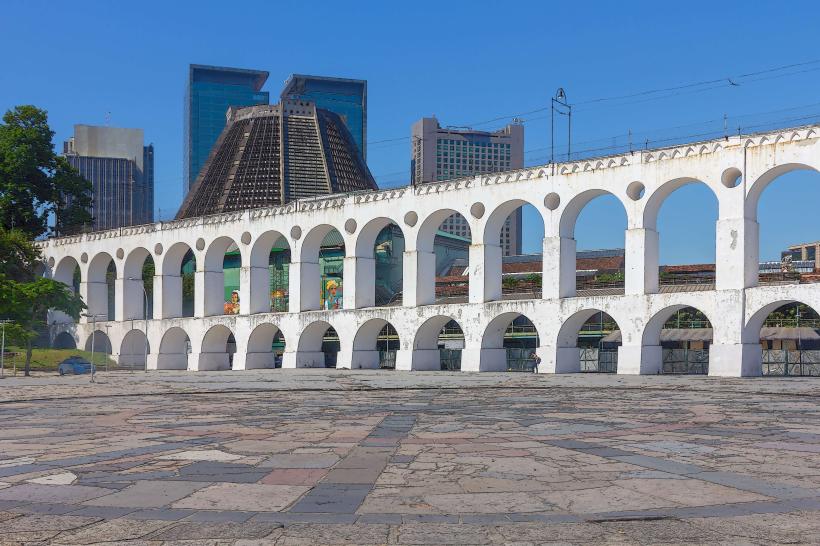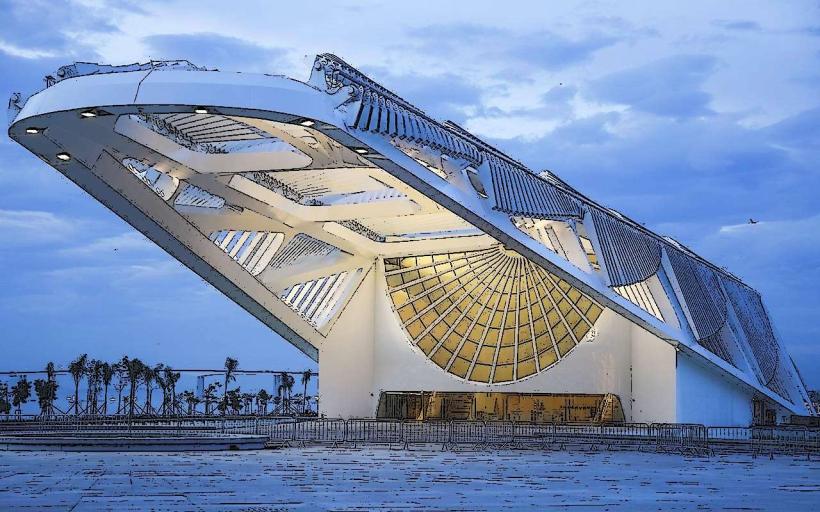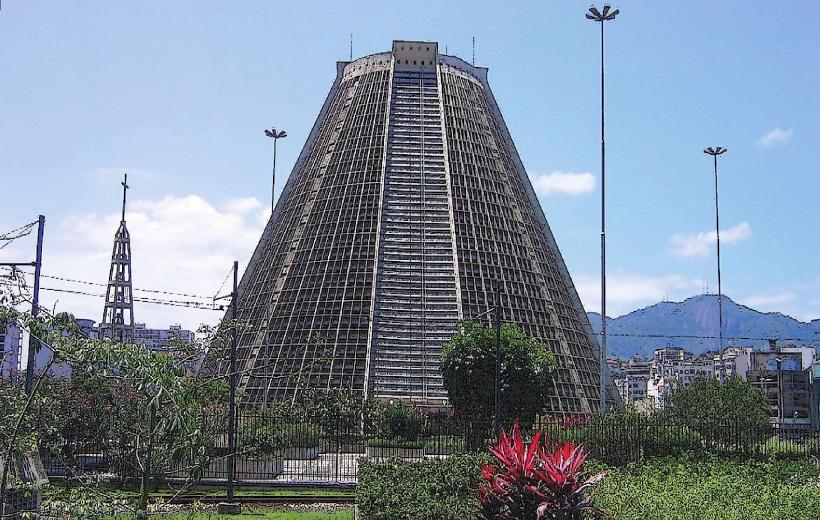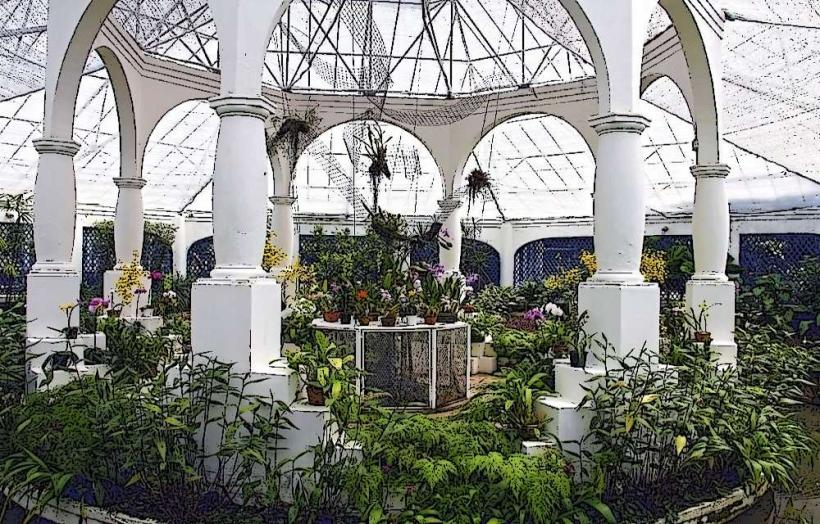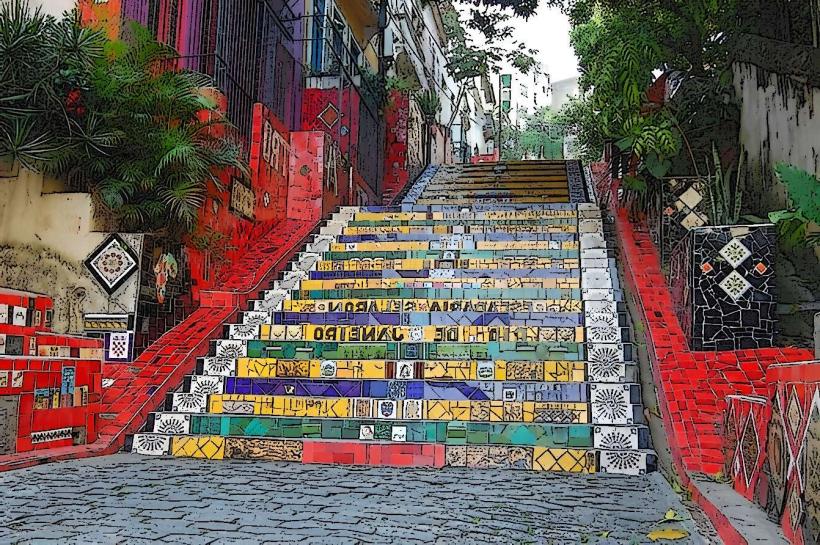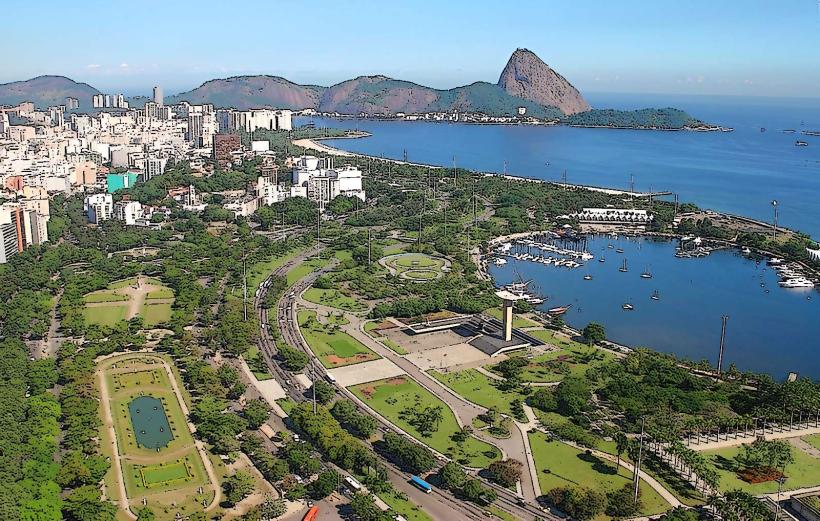Information
Landmark: Santa TeresaCity: Rio de Janeiro
Country: Brazil
Continent: South America
Santa Teresa, Rio de Janeiro, Brazil, South America
Overview
Santa Teresa is a historic, character-filled neighborhood in Rio de Janeiro, where colonial houses line steep, winding lanes and the air hums with a bohemian energy.Perched on a hill, it looks out over the city and the bay, where sunlight flashes off the water.Let’s take a closer look at Santa Teresa-picture sun-warmed streets and the scent of fresh coffee drifting from a corner café: 1.Santa Teresa, founded in the late 1800s, soon drew the city’s elite, who built grand mansions and graceful homes in styles ranging from Art Nouveau to Colonial to Art Deco, their tiled facades catching the afternoon sun.Over the years, the neighborhood grew into a lively, eclectic mix, drawing in artists with paint-stained hands, musicians, and young professionals.Number two.One of the most captivating things about Santa Teresa is its architecture-colorful colonial-era buildings with weathered wooden doors and sun-faded facades that seem frozen in time.Bright houses splash the streets with color, while cobblestones crunch underfoot beside grand, timeworn mansions.Many of the houses still hold onto their original charm, with wrought-iron balconies catching the afternoon light, tall windows open to the breeze, and roofs laid in warm, weathered tiles.The neighborhood boasts several charming churches, among them the Igreja de Santa Teresa, its white façade and bell tower giving the place its name.Three.Santa Teresa has long carried a bohemian spirit, with bright murals splashed across crumbling walls and artists chatting in sunlit cafés.Local musicians, artists, and other creatives flock here, filling the air with guitar riffs and painted storefronts, and the whole place hums with a laid‑back, richly cultural vibe.Galleries line the streets, tucked between tiny bars where laughter spills out, with live music drifting past walls splashed in bright street art.Murals often spill across the walls, splashing them with bold colors and an easy, artistic charm.Number four.The Bonde de Santa Teresa, a bright yellow tram that rattles through the hills, is one of the most iconic sights in Santa Teresa.For over a hundred years, the tram has carried passengers past leafy streets and old brick facades, offering a one-of-a-kind way to see the neighborhood.You wind through narrow, twisting streets, catching flashes of Rio’s bright rooftops, and get a taste of Santa Teresa’s old-world charm.The tram once stopped running for repairs, but it’s back on track now, its bright red cars rattling through the streets and drawing crowds of locals and curious tourists alike.Five.Santa Teresa sits snugly between two well-known neighborhoods-Lapa, with its lively arches and music drifting into the street, and the quieter, tree-lined Flamengo.It’s just a quick stroll to the lively Lapa district, where samba drifts from open doorways and the white stone arches of the Arcos da Lapa rise against the night sky.Santa Teresa gives you a peaceful escape from Lapa’s crowded, music-filled streets, yet it’s only a short walk from the heart of the action.From the hilltop, you can spot the Christ the Redeemer statue standing tall on Corcovado Mountain, its white arms spread wide against the blue sky.Number six.In Santa Teresa, you’ll find lively galleries, small theaters, and festivals that light up the streets year-round.The area’s bursting with more and more art galleries, including the Casa de Cultura Laura Alvim, where you might catch a photography exhibit one week and a lively street festival the next.The neighborhood comes alive with open-air concerts, street festivals, and colorful parades-especially during Carnival, when the steady thump of samba drums rolls through the streets.Seven.Over time, Santa Teresa has transformed, with young professionals and artists moving in for the low rents and lively streets where music spills from open doorways-a shift that’s brought a touch of gentrification.Still, it wrestles with problems-crime in certain neighborhoods and the thorny questions that come with growing a city.Even so, Santa Teresa is still one of Rio’s most treasured neighborhoods, its steep cobblestone streets carrying the city’s soul in every step.Eight.In Santa Teresa, walls burst with color as local and international artists turn the streets into their canvas.Bright murals spill across the neighborhood, splashing color on brick walls and turning them into vivid stories.Many of these murals capture Rio’s rich mix of cultures, as well as the neighborhood’s shifting social life-bright splashes of samba dancers, fishermen, and street vendors tell the story on the walls.Nine.In recent years, Gastronomy Santa Teresa has blossomed into a lively food scene, where you can savor feijoada in a cozy corner café, sample daring fusion plates, or sip cocktails in sleek, buzzing bars.Bar do Mineiro draws a lively crowd with plates of rich, smoky feijoada and chilled caipirinhas, Brazil’s beloved black bean stew and tart lime cocktail.You’ll also find cafes, bakeries, and laid-back spots where locals sip coffee beside visiting tourists.Ten.Public Spaces and Green Areas
Santa Teresa may be mostly urban, but it still offers a handful of green spots, like the shady little park tucked beside the old church.Parque Guinle, just a short walk away, is one of the city’s main public spots, offering locals a quiet patch of grass and the rustle of palm leaves to escape the bustle.You’ll find little squares tucked between buildings and a few lively community spaces, perfect for a slow stroll or sitting on a bench in the afternoon sun.Number eleven sat alone, sharp and simple like two narrow white lines on a dark chalkboard.Getting to Santa Teresa from other parts of Rio is pretty straightforward-you can hop on a tram or catch a quick bus ride up the winding hill.You could grab a taxi, catch a bus, or ride the subway, then finish by hopping on another bus or walking up the steep hill.The steep hills and winding, narrow streets can make driving tricky, especially when you’re squeezing past a parked van, so many visitors still hop on the tram.Santa Teresa weaves Rio’s history, culture, and art into lively streets lined with pastel buildings, blending bohemian charm with striking architecture.Whether you’re soaking in the hillside views, wandering through its lively art studios, or just lingering over coffee on a shaded street, Santa Teresa brims with character and offers a true taste of Rio’s local life.






